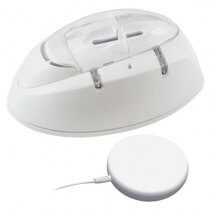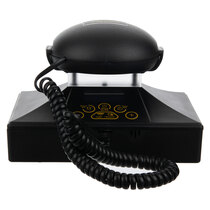-
Contact
Sales & Customer Service
0800 612 6537 support@safelincs.co.uk Live ChatDelivery Enquiries
0800 077 6149 - Resources
Fire & Safety Solutions
CALL OUR TEAM NOW 0800 612 6537
Lines open today 8am - 6pm
FREE Delivery
on marked products
Live Chat - Online
Instant help & Advice
Trade Discounts
and exclusive pricing
0% Credit Available
Open an account now
5 Star Customer Feedback
Smoke Alarms for Deaf and Hearing Impaired People
One in seven people may not be woken up by a conventional smoke alarm system due to a hearing impairment. Our range of specialist smoke alarms for deaf and hard of hearing people provide alternative forms of warning to alert otherwise vulnerable occupants to danger. In place of audible warnings, these alarms use high-intensity strobe lights and / or vibration pads, which are particularly useful for night time use.
While some devices connect to the alarm system installed in your home, others use acoustic technology to detect and be triggered by any alarm sounding (e.g. in a hotel room or holiday home), allowing them to be portable safety systems.
Hispec Mains-Powered Deaf Aid Kit with Strobe Light & Vibrating Pad
With a high-intensity strobe light and wired vibrating pad to alert occupants with hearing impairments, the Hispec Mains Powered Deaf Aid Kit can be interlinked with compatible smoke, heat, and CO alarms.
- Power: 230V mains with sealed self-charging lithium backup
- Interlinks with compatible Hispec smoke, heat, and CO alarms
- Separate LED indicators for power, fault, fire, and carbon monoxide
Hispec Deaf Aid with 2 Smoke, 1 Heat & 1 CO Alarm Kit
Providing protection from fire and carbon monoxide for your home with a high-intensity strobe light and wired vibrating pad to alert occupants with hearing impairments, the Hispec Mains Powered Deaf Aid Kit comes with two compatible optical smoke alarms, one heat alarm, and one carbon monoxide alarm.
- Warranty: 5 year warranty
- Radio-interlink up to 20 Hispec RF10-PRO Alarms
- The deaf aid control unit shows separate LED indicators for power, fault, fire, and carbon monoxide
- 2 x optical smoke alarms, 1 x heat alarm, and 1 x CO alarm included
- Compliant with Scottish 2022 and Northern Ireland Landlord 2024 legislation
Geofire Agrippa Acoustic Digital Pillow Alarm
- Portable device - ideal for hotels and other commerical enterprises
- Acoustically triggered by the sound of a BS 5839-1 system
- Ideal for the hard of hearing and deaf, and features a built in alarm clock
- Powered by standard AA batteries
- Stylish yet functional design
Hispec Deaf Aid with 3 Smoke, 1 Heat & 1 CO Alarm Kit
The Hispec Mains Powered Deaf Aid Kit comes with three compatible optical smoke alarms, one heat alarm, and one carbon monoxide alarm. Provide fire and carbon monoxide protection for your home with a high-intensity strobe light and wired vibrating pad to alert occupants with hearing impairments.
- Warranty: 5 year warranty
- Radio-interlink up to 20 Hispec compatible alarms
- Control panel for the deaf aid kit shows separate indicator LED's for power, fault, fire, and carbon monoxide
- Kit includes 3 x Optical smoke alarms, 1 x Heat alarm, and 1 x CO alarm
- Compliant with Scottish 2022 and Northern Ireland Landlord 2024 legislation
Geofire Agrippa Deaf Alert Acoustic Pillow Alarm with UltraFire UBS1 Optical Smoke Alarm
- Geofire Agrippa Deaf Alarm (mains powered with alkaline back-up)
- UltraFire UBS1 Smoke Alarm (9V alkaline battery powered)
- Acoustically triggered by the sound of an UltraFire UBS1 alarm
- LCD display with time and alarm clock function
- Designed and manufactured in the UK
Ei170RF Radio-Interlinked Strobe and Vibration Pad for the Deaf & Hearing Impaired
- Radio-interlinked strobe and vibration pad kit for the deaf and hard of hearing
- RF range 150 metres (minimum) in free space
- 5 year warranty
Deafgard - Bedside Fire Alarm Monitor for the Deaf & Hearing Impaired
- Notifies user with vibration and strobe of a fire alarm
- The device 'hears' the fire alarm or security alarm sounders
- No installation required - completely portable, ideal for use at home or while travelling
- Built-in alarm clock facility
Are there smoke alarms for people with hearing impairments?
Yes, a variety of detectors have been developed to alert people with hearing impairments to fire and carbon monoxide (CO). Instead of, or as well as emitting an audible warning, these specialist devices use visible and tactile alerts (such as strobe lighting or strong vibrations) to the danger. Some systems link directly with compatible home smoke alarm systems, such as the Firehawk FH700HIA, while other devices like the Deafgard are triggered by the sound of any fire alarm, meaning that they are portable and suitable for use when travelling.
Can a deaf person be woken up by a smoke alarm?
Depending on their level of hearing loss, a deaf person may not be woken up by a traditional fire alarm. To ensure that people with hearing impairments are alerted to danger and can get themselves to a place of safety, adaptive devices have been developed. In some cases, these devices will also alert to CO detection.
Wireless fire alarm for deaf and hearing-impaired people
All of the smoke and CO alarm devices in our range are wireless. This ensures easy installation and minimal day to day inconvenience caused by the device. Some smoke alarms which have been designed for those with hearing impairments connect with a compatible alarm system installed in the home, while others use acoustic technology to detect any alarm. Devices such as the Deafgard are therefore suitable for travel, as they will be triggered by the sound of any alarm.
Vibrating fire alarm for deaf and hearing-impaired people
For people with hearing impairments, fire alarms which emit sound to warn building occupants of the danger may not be effective. At night, when people are sleeping, this can leave those who have no or limited hearing vulnerable. To overcome this, detection systems which vibrate strongly upon activation of the building’s fire alarm have been developed. These devices usually have a small pad attachment which sits under the pillow of the person needing it.
Vibrating pads and flashing strobe lights
People with impaired hearing may not hear a traditional fire alarm, so adaptive devices use different types of alert through different senses. The most common forms of adaptive alert are strobe lighting (sight) and vibration (touch); many devices use both.
Vibrating pads
Adaptive devices with this feature have a small pad attached to the main device with a cable. The pad sits subtly under the pillow, making it unobtrusive when not activated. If the alarm is triggered, the pad will vibrate strongly, waking up the user. This type of alarm is most useful at night; some of these devices have an alarm clock feature built in.
Strobe lighting
Adaptive devices which emit bright lights are most useful during the day, as lights alone may not be enough to wake deep sleepers.


























